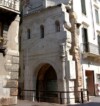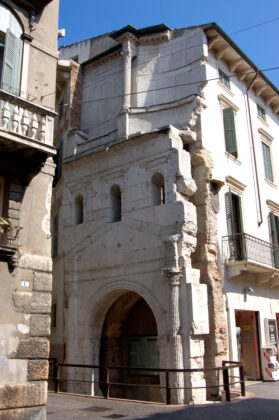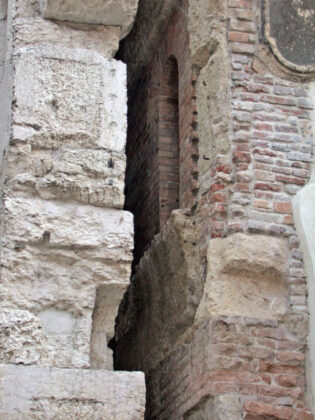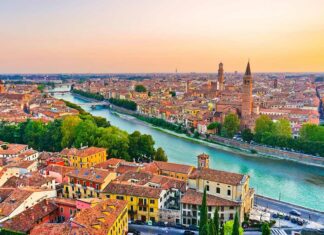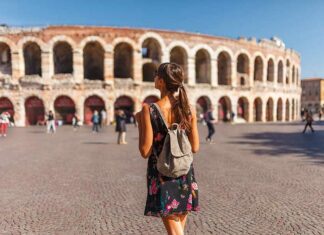One of the gates that opened onto the city in Roman times (1st century BC), giving access to the cardo maximus, the city’s most important road axis after the decumanus. It takes its name from a sarcophagus found nearby depicting a pair of lions. Located at the end of Via Cappello, where you can also find the famous Juliet’s House, Porta dei Leoni is a Roman gate that has survived to the present day in an admirable state of preservation.
Characterized by the same structure as the other Roman gate in the city, Porta Borsari, the Porta dei Leoni was a sort of small fortress with courtyards and inner rooms, built of brick and tuff in the Republican age. A richly decorated white limestone façade was added to it during the great work of embellishment and rebuilding of the city that took place in the imperial period.
Porta dei Leoni, a Small Roman Gate and Fortress
enable geolocation to display your position
Porta Leoni, Via Leoni, Verona, VR, Italia

